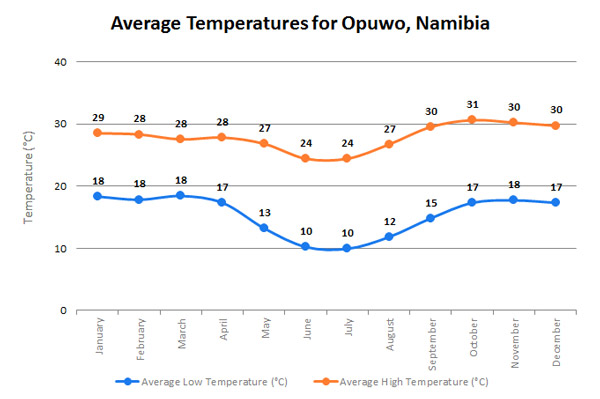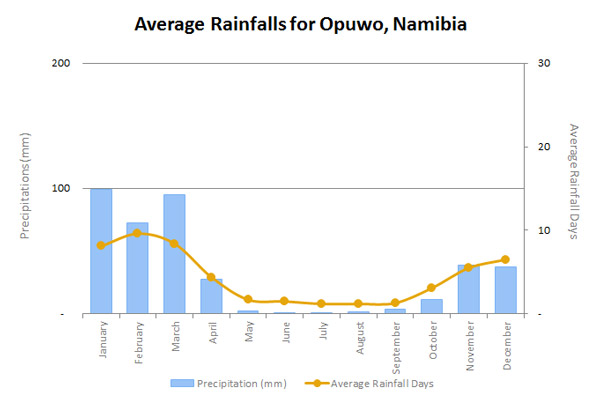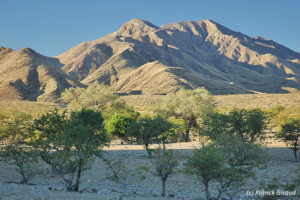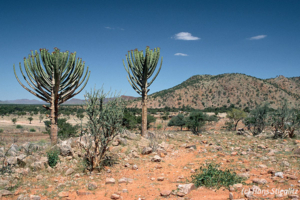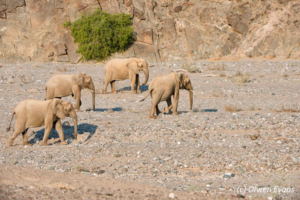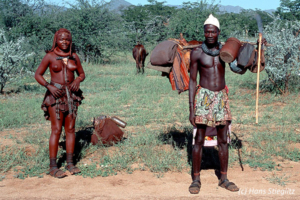Kaokoland
Kaokoland was an administrative unit and a bantustan in northern western Namibia, in the Kaokoveld ecoregion. Established during the apartheid era, it was intended to be a self-governing homeland of the OvaHimba people. An actual government was, however, never established. Like other homelands in Austral Africa, the Kaokoland bantustan was abolished in May 1989, at the beginning of the transition of Namibia towards independence. Although “Kaokoland” remains as an informal name for the geographic area, the political unit of administration since 1990 is Kunene Region.
The Kaokoland area extends south-north from the Hoanib River to the Kunene River (that also marks the border between Namibia and Angola). It is largely mountainous, with the northern Baynes Mountains reaching a maximum elevation of 2,039 m. Other notable mountain ranges of Kaokoland include the Otjihipa Mountains and the Hartmann Mountains (to the east). The land is generally dry and rocky, especially to the south, where it borders on the Namib Desert. It has nevertheless several rivers as well as falls; the most notable falls in Kaokoland are the Ruacana Falls (120 m high, 700 m wide) and the Epupa Falls, both formed by the Kunene River. The northern part of Kaokoland is greener, with vegetation thriving in valleys such as the Marienfluss and Hartmann Valley.
Being very isolated, this territory included Africans of the Himba and Herero ethnic groups and it was only colonised late on by the Germans. Today, the Kaokaland is a sanctuary that is almost intact for wild fauna and flora.
Kaokaland is one of Namibia’s most wild and remote areas, a land of adventure where desert-adapted animal species such as elephants, rhinos, the famous desert lion (sighting not guaranteed, sadly), giraffes, ostriches, and mountain zebras roam the river beds and wadis of Huab, Hoanib, Hoarusib, and Khumib.



